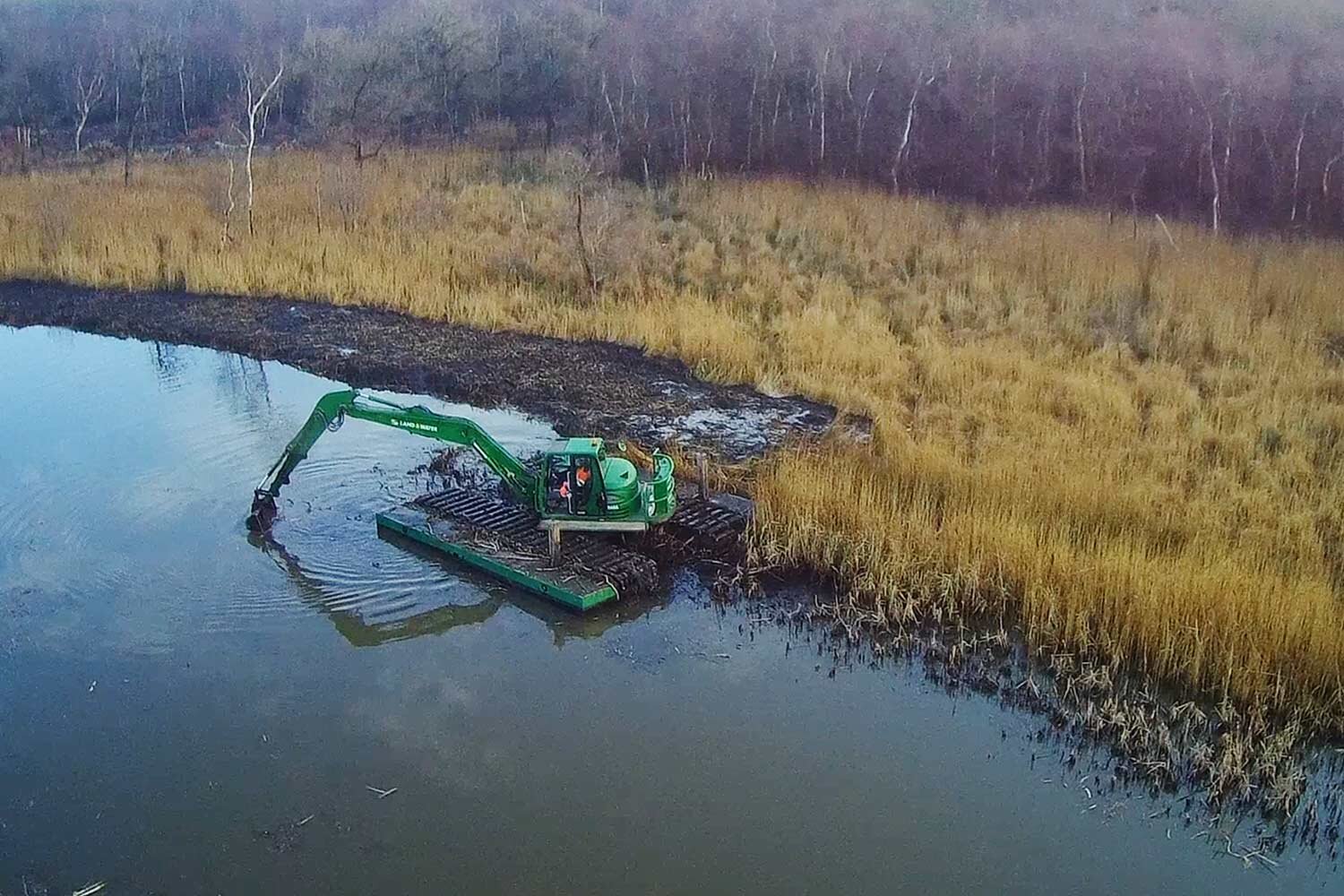Desilting lakes
Silt removal
When waters become too shallow or polluted with mud, silt and organic detritus (such as leaf litter), mechanical silt removal may be required.
The impact of increased sediment and debris is a reduction of oxygen levels, which can produce acidic conditions, reducing the fertility of the pond and putting fish stocks at risk. Heightened silt levels also put a pond at an increased risk of flooding.
Desilting a pond means that it stays clean and functional.
Mechanical removal
Our first method of choice is to drain the lake prior to the removal of the silt by excavation. The drier the silt, the easier it is to dispose of. This keeps haulage to a minimum. Also, if silt is utilised as a backfill to any new revetments, the dried material is much more stable.
Material removed from the site may require EA authority before disposal. We can incorporate these approvals into any project planning.
Similarly, we can advise on and carry out works for flood defences for rivers and other watercourses. Talk to us about levees, bunds, reservoirs, weirs, retention ponds and more.
Desilting Calthorpe Broad Nature Reserve
Calthorpe Broad Nature Reserve consists of a small isolated Broad close to Stalham, Norfolk. Together with associated dykes, wet and dry woodland, fen and grazing marshes, the reserve covers a total area of 44.5 ha. It is a Site of Special Scientific Interest and part of the Broads Special Area of Conservation and Broadland Special Protection Area.
In January 2021, we undertook the restoration of the Broad. We removed over 4,000m2 of sediment and emergent vegetation (Phragmites australis) from around the edges of the Broad, using the spoil to create bund wildlife habitats.
The work was designed to restore the Broad to around 6,000m2, thereby maintaining the open water communities while also retaining much of the new fen vegetation.
A 13-tonne excavator was mounted on a floating pontoon in order to access the Broad. The work had to be carried out before the end of March, which meant the surrounding land and access routes were waterlogged.
This meant considerable planning was required for the mobilisation of the amphibious excavator and its flotation devices. Liaison with local farmers also ensured access was secured for the plant to be moved on to site with minimal effect on the ecology.
Get in touch today to see how we can help with your project.


